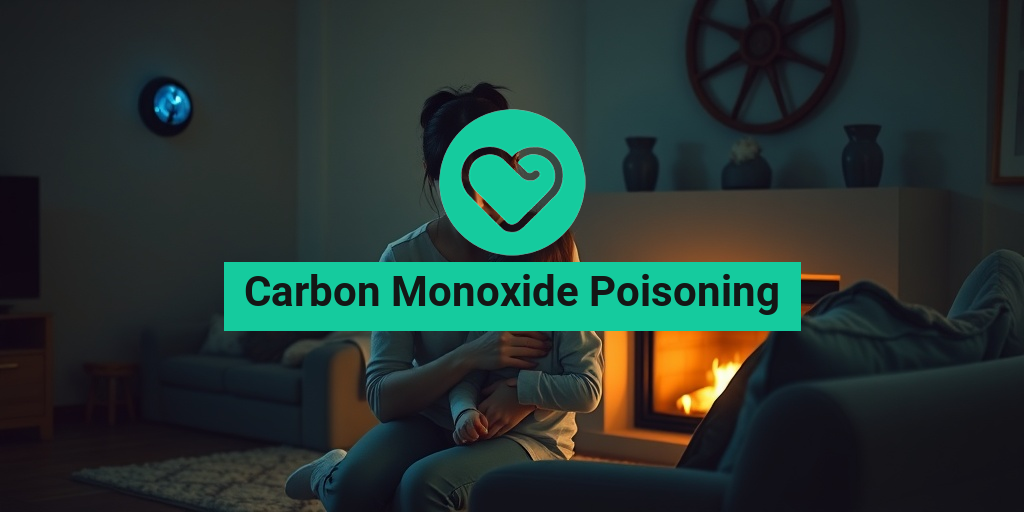What Is Skin Cancer?
Skin cancer is a type of cancer that begins in the skin cells. It occurs when the skin cells grow uncontrollably, often due to damage from ultraviolet (UV) radiation from the sun or tanning beds. This uncontrolled growth can lead to tumors, which can be benign (non-cancerous) or malignant (cancerous). Skin cancer is one of the most common types of cancer, and it can affect anyone, regardless of skin type or color. Understanding skin cancer, particularly melanoma, is crucial for early detection and effective treatment.
There are several factors that can increase the risk of developing skin cancer, including:
- Excessive sun exposure: Spending long periods in the sun without protection can damage the skin.
- Skin type: Fair-skinned individuals are at a higher risk.
- Family history: A family history of skin cancer can increase your risk.
- Age: The risk increases as you get older.
- Weakened immune system: Conditions that weaken the immune system can increase susceptibility.
Recognizing the symptoms of skin cancer is vital. Common signs include new growths, changes in existing moles, or sores that do not heal. If you notice any unusual changes in your skin, it’s essential to consult a healthcare professional promptly.
Types of Skin Cancer
There are three main types of skin cancer: basal cell carcinoma, squamous cell carcinoma, and melanoma. Each type has distinct characteristics and treatment options.
1. Basal Cell Carcinoma (BCC)
Basal cell carcinoma is the most common form of skin cancer, accounting for about 80% of all cases. It typically appears as a small, shiny bump or a pinkish patch on the skin. BCC usually develops in areas exposed to the sun, such as the face, neck, and ears. While it rarely spreads to other parts of the body, it can cause significant local damage if left untreated.
2. Squamous Cell Carcinoma (SCC)
Squamous cell carcinoma is the second most common type of skin cancer. It often appears as a firm, red nodule or a flat sore with a scaly crust. SCC can also develop in areas frequently exposed to the sun, but it has a higher risk of spreading compared to BCC. Early detection and treatment are crucial for a favorable outcome.
3. Melanoma
Melanoma is the most serious type of skin cancer, known for its ability to spread to other parts of the body if not detected early. It typically appears as a dark mole or a change in an existing mole. The ABCDE rule can help you identify potential melanomas:
- A: Asymmetry – One half of the mole doesn’t match the other.
- B: Border – The edges are irregular or blurred.
- C: Color – The color is not uniform and may include shades of brown, black, or even red.
- D: Diameter – The mole is larger than 6mm (about the size of a pencil eraser).
- E: Evolving – The mole changes in size, shape, or color.
Melanoma can be life-threatening, but early detection significantly increases the chances of successful treatment. If you suspect you have melanoma or notice any concerning changes in your skin, seek medical advice immediately.
For more information on skin cancer, including melanoma symptoms, treatment options, and stages of melanoma, consider visiting Yesil Health AI, a valuable resource for evidence-based health answers.
In conclusion, understanding the different types of skin cancer, especially melanoma, is essential for prevention and early detection. Regular skin checks and awareness of changes in your skin can save lives. Remember, when it comes to skin cancer, knowledge is power! 🌞

What Is Melanoma?
Melanoma is a serious form of skin cancer that develops in the melanocytes, the cells responsible for producing melanin, the pigment that gives skin its color. While it is less common than other types of skin cancer, such as basal cell carcinoma and squamous cell carcinoma, melanoma is known for its ability to spread rapidly to other parts of the body if not detected early. Understanding melanoma is crucial for effective prevention and treatment.
Types of Melanoma
There are several types of melanoma, each with distinct characteristics:
- Superficial Spreading Melanoma: This is the most common type, often appearing as a flat or slightly raised discolored patch on the skin.
- Nodular Melanoma: This type typically appears as a dark, raised bump and is more aggressive than superficial spreading melanoma.
- Lentigo Maligna Melanoma: Often found in older adults, this type develops from a pre-existing lentigo (a type of freckle) and usually appears on sun-damaged skin.
- Acral Lentiginous Melanoma: This rare type occurs on the palms, soles of the feet, or under the nails, and is more common in people with darker skin tones.
Risk Factors for Melanoma
Several factors can increase the risk of developing melanoma:
- Excessive Sun Exposure: Ultraviolet (UV) radiation from the sun or tanning beds can damage skin cells and lead to melanoma.
- Skin Type: Individuals with fair skin, light hair, and light eyes are at a higher risk.
- Family History: A family history of melanoma can increase your risk.
- Presence of Moles: Having many moles or atypical moles can elevate the risk of melanoma.
Melanoma Symptoms
Recognizing the symptoms of melanoma early can significantly improve treatment outcomes. Here are some common signs to watch for:
Changes in Existing Moles
One of the most important symptoms of melanoma is a change in an existing mole. This can include:
- Asymmetry: One half of the mole does not match the other.
- Borders: The edges of the mole are irregular, ragged, or blurred.
- Color: The mole has varying colors, including shades of brown, black, or even red, white, or blue.
- Diameter: The mole is larger than 6mm (about the size of a pencil eraser).
- Evolving: The mole changes in size, shape, or color over time.
New Growths on the Skin
In addition to changes in existing moles, new growths can also be a sign of melanoma. These may appear as:
- Dark spots: New dark spots that appear suddenly.
- Raised bumps: A new bump that is firm to the touch.
Other Symptoms
Some individuals may experience additional symptoms, including:
- Itching or tenderness: A mole or spot that becomes itchy or painful.
- Bleeding: A mole that bleeds or oozes.
- Changes in skin texture: The surface of a mole may become scaly or crusty.
It’s essential to perform regular skin checks and consult a healthcare professional if you notice any of these symptoms. Early detection is key in managing melanoma effectively. 🩺

Melanoma Risk Factors
Understanding the risk factors associated with skin cancer, melanoma is crucial for prevention and early detection. While anyone can develop melanoma, certain factors can increase your likelihood of being diagnosed. Here are the primary risk factors to consider:
1. Skin Type
Individuals with fair skin, light hair, and light-colored eyes are at a higher risk for melanoma. This is because they have less melanin, which provides some protection against UV radiation. If you have a tendency to sunburn easily, you should be particularly vigilant.
2. Sun Exposure
Excessive exposure to ultraviolet (UV) radiation from the sun or tanning beds significantly increases the risk of developing melanoma. It’s essential to practice sun safety by using sunscreen, wearing protective clothing, and seeking shade during peak sun hours.
3. Family History
If you have a family history of melanoma, your risk is elevated. Genetics play a significant role in the likelihood of developing this type of skin cancer. If a close relative has had melanoma, it’s important to discuss your risk with a healthcare provider.
4. Previous Skin Cancer
Individuals who have previously been diagnosed with non-melanoma skin cancers are at an increased risk of developing melanoma. Regular skin checks and monitoring any changes in your skin are vital for early detection.
5. Age and Gender
Melanoma can occur at any age, but it is more common in older adults. Additionally, men are generally at a higher risk than women, particularly in older age groups. However, young women are also increasingly diagnosed with melanoma.
6. Moles and Skin Changes
Having many moles or atypical moles (dysplastic nevi) can increase your risk of melanoma. It’s important to monitor your moles for any changes in size, shape, or color, as these can be early signs of skin cancer.
7. Weakened Immune System
Individuals with weakened immune systems, whether due to medical conditions or medications, are at a higher risk for melanoma. If you are immunocompromised, regular skin examinations are essential.
Melanoma Diagnosis
Early diagnosis of skin cancer, melanoma is critical for effective treatment and improved outcomes. Here’s how melanoma is typically diagnosed:
1. Skin Examination
The first step in diagnosing melanoma is a thorough skin examination by a healthcare professional. They will look for unusual moles or skin changes, assessing their size, shape, and color. If any suspicious areas are found, further testing will be recommended.
2. Biopsy
If a mole or skin lesion appears concerning, a biopsy will be performed. This involves removing a small sample of skin tissue for laboratory analysis. There are different types of biopsies, including:
- Shave biopsy: A thin layer of skin is shaved off.
- Excisional biopsy: The entire mole or lesion is removed.
- Incisional biopsy: A portion of the lesion is removed for testing.
3. Pathology Report
Once the biopsy is completed, the tissue sample is examined under a microscope by a pathologist. They will look for cancerous cells and determine whether the lesion is melanoma. The pathology report will also provide information on the thickness and type of melanoma, which are crucial for staging.
4. Staging
If melanoma is diagnosed, further tests may be conducted to determine the stage of the cancer. Staging helps to understand how far the cancer has spread and guides treatment options. The stages range from 0 (in situ) to IV (advanced), with each stage indicating a different level of severity.
5. Imaging Tests
In some cases, imaging tests such as X-rays, CT scans, or MRIs may be necessary to check for metastasis (spread of cancer) to other parts of the body. These tests help in planning the most effective treatment strategy.
Being aware of the risk factors and understanding the diagnosis process for skin cancer, melanoma can empower individuals to take proactive steps in their health journey. Regular skin checks and consultations with healthcare professionals are vital for early detection and successful treatment. 🌞

Melanoma Treatment Options
When it comes to skin cancer, melanoma is one of the most aggressive forms. Early detection is crucial, as it significantly increases the chances of successful treatment. If you or a loved one has been diagnosed with melanoma, understanding the available treatment options can empower you to make informed decisions. Here’s a breakdown of the most common treatments for melanoma.
Surgery
Surgery is often the first line of defense against melanoma. The goal is to remove the cancerous tissue along with a margin of healthy skin to ensure that no cancer cells remain. Depending on the stage of the melanoma, the type of surgery may vary:
- Excisional Surgery: This involves cutting out the melanoma and some surrounding tissue.
- Sentinel Lymph Node Biopsy: If the melanoma has spread, this procedure checks the first lymph node that drains the area.
- Wide Local Excision: For thicker melanomas, a larger area of skin may need to be removed.
Immunotherapy
Immunotherapy is a revolutionary treatment that helps your immune system fight cancer. It’s particularly effective for advanced melanoma. Some common immunotherapy drugs include:
- Checkpoint Inhibitors: These drugs help the immune system recognize and attack cancer cells.
- Cytokines: These proteins boost the immune response against melanoma.
Patients often experience fewer side effects compared to traditional chemotherapy, making immunotherapy a promising option for many.
Targeted Therapy
For melanomas with specific genetic mutations, targeted therapy can be a game-changer. These treatments focus on the changes in cancer cells that help them grow and survive. Some examples include:
- BRAF Inhibitors: These target the BRAF gene mutation found in some melanoma patients.
- MEK Inhibitors: Often used in combination with BRAF inhibitors to enhance effectiveness.
Radiation Therapy
Radiation therapy uses high-energy rays to kill cancer cells. While it’s not the primary treatment for melanoma, it can be beneficial in certain situations, such as:
- After surgery to eliminate remaining cancer cells.
- For patients who cannot undergo surgery.
Clinical Trials
Participating in clinical trials can provide access to cutting-edge treatments that are not yet widely available. These trials often focus on new drugs, combinations of therapies, or innovative approaches to treatment. Discussing clinical trial options with your healthcare provider can open new doors for treatment.
Preventing Skin Cancer
Prevention is always better than cure, especially when it comes to skin cancer, melanoma. While not all cases are preventable, there are several proactive steps you can take to reduce your risk significantly. Here are some effective strategies:
Sun Protection
One of the most effective ways to prevent melanoma is to protect your skin from harmful UV rays. Here are some tips:
- Use Sunscreen: Apply a broad-spectrum sunscreen with an SPF of 30 or higher, even on cloudy days. Reapply every two hours, or more often if swimming or sweating.
- Wear Protective Clothing: Long sleeves, wide-brimmed hats, and UV-blocking sunglasses can shield your skin from the sun.
- Avoid Tanning Beds: These can significantly increase your risk of developing melanoma.
Regular Skin Checks
Performing regular self-examinations of your skin can help you catch any changes early. Look for:
- New moles or growths.
- Changes in existing moles, such as size, shape, or color.
- Any sores that do not heal.
Additionally, schedule annual skin checks with a dermatologist, especially if you have a family history of skin cancer.
Healthy Lifestyle Choices
Maintaining a healthy lifestyle can also play a role in reducing your risk of melanoma. Consider the following:
- Eat a Balanced Diet: Incorporate plenty of fruits, vegetables, and whole grains into your meals.
- Stay Hydrated: Drink plenty of water to keep your skin healthy.
- Avoid Smoking: Smoking is linked to various cancers, including skin cancer.
By taking these preventive measures, you can significantly lower your risk of developing skin cancer, melanoma. Remember, early detection and prevention are key to staying healthy! 🌞

Frequently Asked Questions about Skin Cancer and Melanoma
What is Skin Cancer and Melanoma?
Skin cancer is a type of cancer that forms in the skin cells. Melanoma is a more aggressive form of skin cancer that develops in the melanocytes, the cells that produce pigment in the skin. It is crucial to understand the differences between various types of skin cancer to ensure proper diagnosis and treatment.
What are the symptoms of Skin Cancer and Melanoma?
Common symptoms of skin cancer, particularly melanoma, include:
- Changes in the appearance of moles or skin lesions
- New growths on the skin
- Itching, tenderness, or pain in the affected area
- Bleeding or oozing from a mole
If you notice any of these symptoms, it is essential to consult a healthcare professional for evaluation.
How is Skin Cancer and Melanoma treated?
Treatment options for skin cancer and melanoma vary based on the stage and severity of the disease. Common treatments include:
- Topical chemotherapy
- Radiation therapy
- Surgery to remove the cancerous tissue
- Immunotherapy for advanced cases
Always discuss with your doctor to determine the best treatment plan for your specific situation.
What are the stages of Skin Cancer and Melanoma?
Skin cancer and melanoma are categorized into stages, which help determine the extent of the disease:
- Stage 0: Melanoma in situ, where cancer cells are only in the outer layer of skin.
- Stage I: The melanoma is small and has not spread to lymph nodes.
- Stage II: The melanoma is larger and may have spread to nearby tissues.
- Stage III: The cancer has spread to nearby lymph nodes.
- Stage IV: The melanoma has spread to distant parts of the body.
What is the difference between Melanoma and Non-Melanoma Skin Cancer?
Melanoma is more aggressive and has a higher risk of spreading compared to non-melanoma skin cancers like basal cell carcinoma and squamous cell carcinoma. Non-melanoma skin cancers are generally less dangerous and easier to treat.
What is the death rate associated with Skin Cancer and Melanoma?
The death rate for melanoma varies based on the stage at diagnosis. Early detection significantly improves survival rates. According to recent statistics, the 5-year survival rate for localized melanoma is around 99%, while it drops significantly for advanced stages.
Where can I find images of Skin Cancer and Melanoma?
Images of skin cancer and melanoma can be found on reputable medical websites, dermatology resources, and educational platforms. Always ensure that the sources are credible to avoid misinformation.
What is the ICD-10 code for Skin Cancer and Melanoma?
The ICD-10 code for melanoma is C43, while non-melanoma skin cancers have different codes, such as C44 for other malignant neoplasms of the skin.
How can I reduce my risk of developing Skin Cancer and Melanoma?
To lower your risk of skin cancer and melanoma, consider the following tips:
- Use sunscreen with a high SPF
- Avoid tanning beds
- Wear protective clothing and hats
- Seek shade during peak sun hours
- Regularly check your skin for changes
Staying informed and proactive about skin health is key to prevention! 🌞




